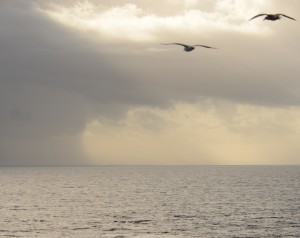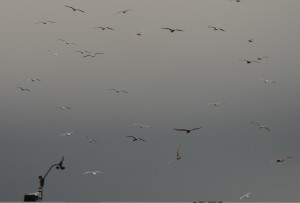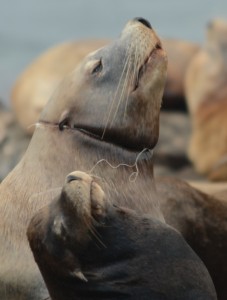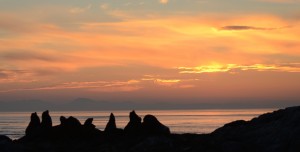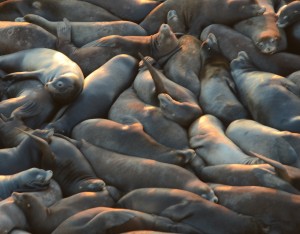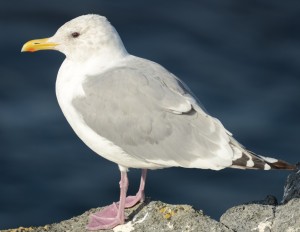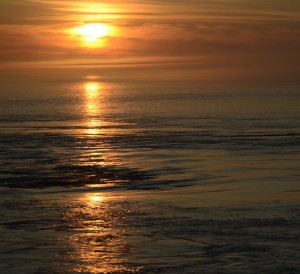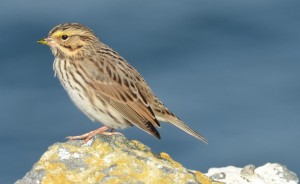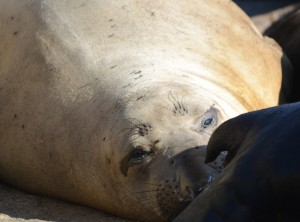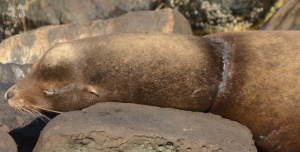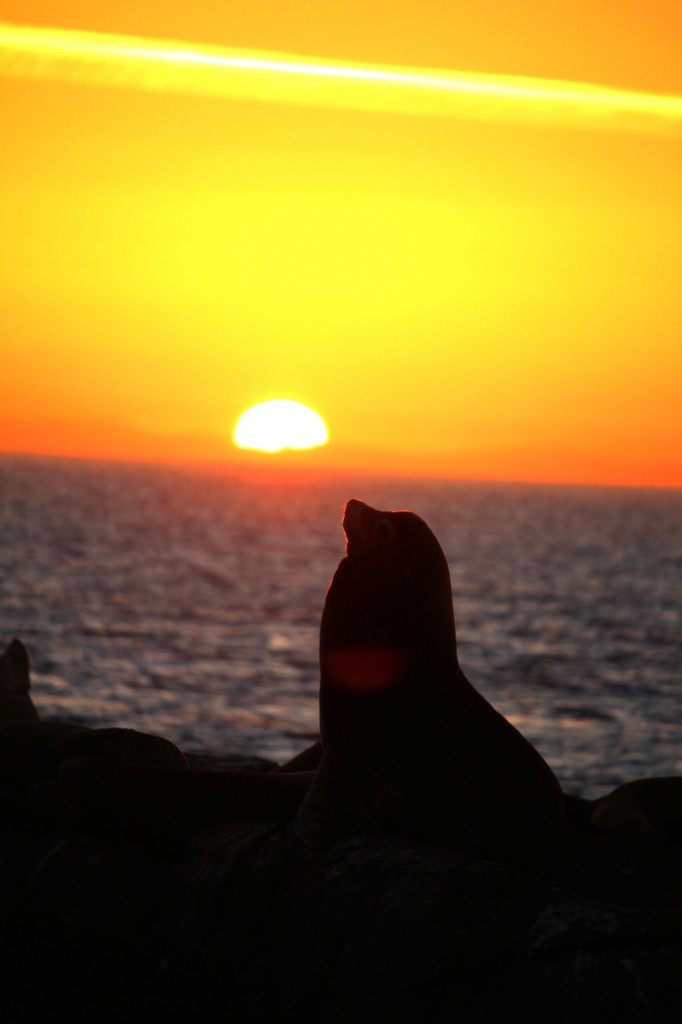Today was a weather day; we had all kinds. The morning fog was thick but lifted early and a westerly wind blew in squall after squall with dramatic downpours interspersed with glorious sunshine. The island had several good fresh water rinses, much needed after a long dry season.
There were dramatic cloud towers with thunder rumbles in the distance. Late afternoon the west wind simmered down to a steady 20 knots and the sky cleared. The barometer rose all day as it became nicer and nicer. A strong wind warning remains in effect for central Juan de Fuca and the outlook is for west winds, showers and increasing cloudiness Sunday and then a shift to southeasterly winds and rain on Monday.
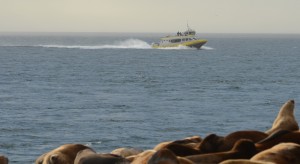
Some of the whale watching boats seemed to be in a hurry today. The speed limit within 400 meters of the islets is 7 knots.
It was a busy day for whale watching boats visiting the Ecological Reserve. A total of eleven boats were noted watching pinnipeds and more passed just outside the boundaries following the lags and watching Humpbacks just to the south and east of Race Rocks. Several of whale watching boats were pushing the boundaries of speeding in the reserve.
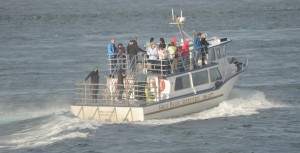
In a hurry? King Salmon of Great Pacific Adventures rushing through the Ecological Reserve at Race Rocks.
The usual dive boat spent most of the day in the Ecological Reserve doing multiple dives to the north of Great Race and finishing their last dive just off the jetty.
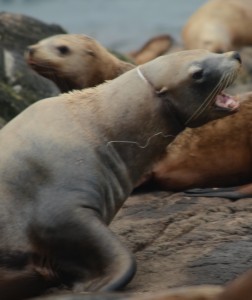
The Steller’s Sea Lion would be a good candidate for disentanglement. He is robust and the strapping is not cutting into the back of his neck, yet.
Ecological observations were made throughout the day as opportunities arose.
I spotted a new (to me), entangled, Steller’s Sea Lion. It looked as though the culprit was plastic strapping again and there is a tiny glimmer of hope for the animal because, although the plastic had cut into the flesh of its throat, there was a bit of it unraveling and maybe there will be more. Again this would be a good candidate for disentangling because the plastic strap could easily be cut on the back where it was not embedded and because the individual is (for now) otherwise healthy-looking and robust enough to get into several scraps just finding a place to sleep.
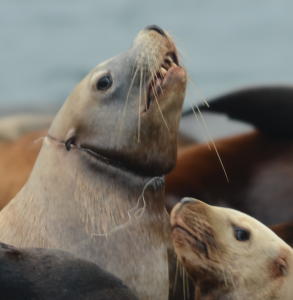
If it wasn’t so anthropomorphic, I might be tempted to suggest that these two are both saying, ‘do something, please’.
Alex and I took advantage of the downpours to collect rainwater in the wheelbarrow and wash outside windows. Alex made a sturdy, long handle for the squeegee and we worked as a team to clean and squeegee the exterior of the windows on both houses. The science house windows were still covered from gull breeding season, dive bombings and will benefit from a few more downpours which are on the horizon now. We tried to trouble-shoot the wind direction problems (again) with the Davis Weather system. Holding the vane at ninety degrees did not affect the reading on the console display. The usual chores regarding power, water and seawater sampling were also completed.
